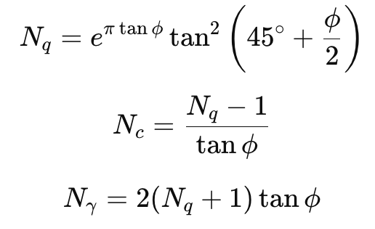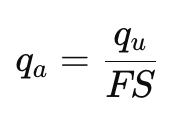Soil Bearing Calculator
Soil Bearing Calculator
Wiratama
11/15/20252 min read
Soil Bearing Capacity – Definition
Soil bearing capacity is the maximum contact pressure that the ground can safely support without experiencing shear failure or excessive settlement. It is a key parameter in the design of shallow foundations such as footings, pads, rafts, and isolated columns. Bearing capacity ensures that the foundation remains stable under vertical loads from the structure.
Background Theory
1. Terzaghi’s Bearing Capacity Equation (Classical Method)
Karl Terzaghi’s equation is widely used for estimating the ultimate bearing capacity of shallow strip foundations under vertical loads.


Where:
ccc = soil cohesion
ϕ\phiϕ = friction angle
γ\gammaγ = soil unit weight
DfD_fDf = foundation depth
BBB = footing width
Nc,Nq,NγN_c, N_q, N_\gammaNc,Nq,Nγ = bearing capacity factors
These factors depend on the soil friction angle and capture how soil resists shear failure under loading.
2. Bearing Capacity Factors


For purely cohesive soil (ϕ=0\phi = 0ϕ=0):
Nc=5.14
Nq=1
Nγ=0
3. Allowable Bearing Capacity
The allowable value accounts for a factor of safety (FS):


Common FS values range from 2.5 to 3.5 depending on uncertainty and soil variability.
How This Calculator Works
Step 1 — User Inputs
The calculator requires:
Cohesion (c)
Friction angle (φ)
Soil unit weight (γ)
Footing width (B)
Foundation depth (Df)
Factor of safety (FS)
Step 2 — Compute Bearing Capacity Factors
Using Terzaghi’s equations, the calculator computes:
Nc
Nq
Nγ
Step 3 — Calculate Ultimate Bearing Capacity
The classical Terzaghi formula is applied to obtain:


Step 4 — Calculate Allowable Bearing Capacity


Outputs include both ultimate and allowable capacities.
Step 5 — Display Results
The calculator shows:
Ultimate Capacity (kPa)
Allowable Capacity (kPa)
These values assist engineers in selecting safe footing sizes, checking soil safety, and performing geotechnical design quickly.
